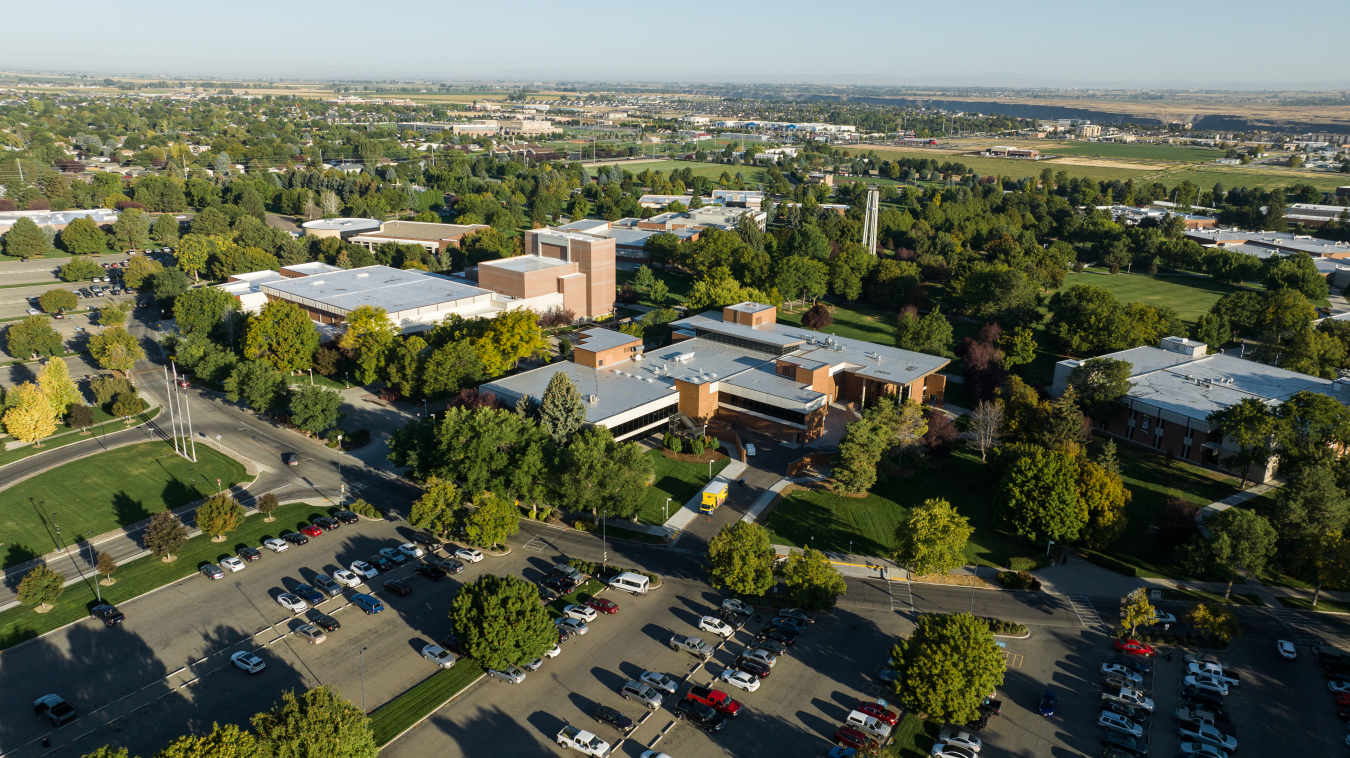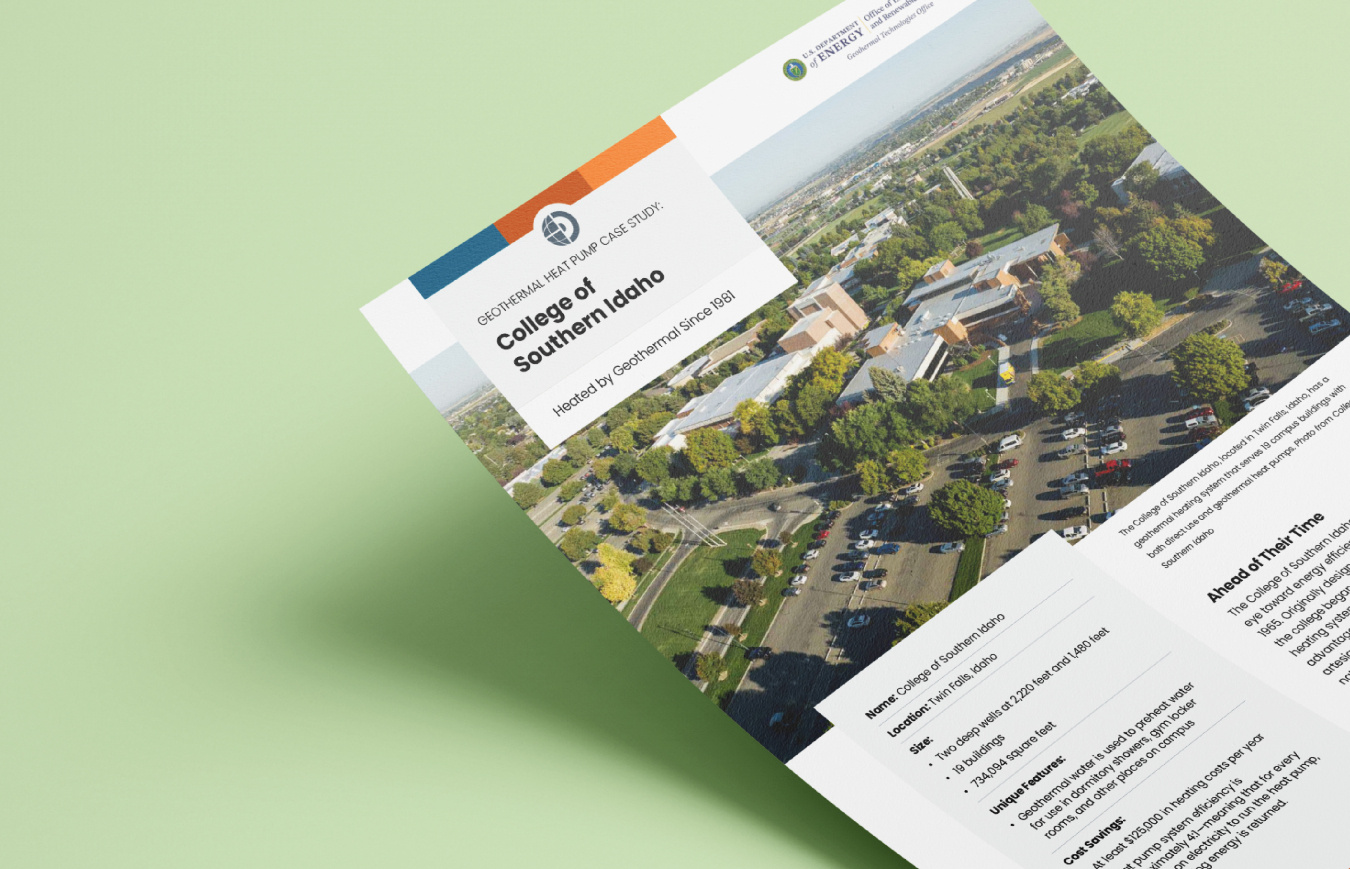
The College of Southern Idaho, located in Twin Falls, Idaho, has a geothermal heating system that serves 19 campus buildings with both direct use and geothermal heat pumps. Photo from College of Southern Idaho
Fast Facts
Location: Twin Falls, Idaho
Size:
- Two deep wells at 2,220 feet and 1,480 feet
- 19 buildings
- 734,094 square feet
Unique Features:
- Geothermal water is used to preheat water for use in dormitory showers, gym locker rooms, and other places on campus
Download the full case study for additional fast facts.
Ahead of Their Time
The College of Southern Idaho (CSI) has had an eye toward energy efficiency since their founding in 1965. Originally designed as an all-electric campus, the college began transitioning to a geothermal heating system more than 45 years ago to take advantage of southern Idaho’s unique thermal-artesian groundwater system. The system has naturally warm water that comes nearly to the surface without any infrastructure.
In 1978, only 13 years after the college opened its doors, CSI president Dr. James L. Taylor drilled the first geothermal well on campus. Operation of the geothermal heating system began in earnest in 1981, making CSI one of the earliest adopters of this technology on a U.S. college campus. Now, 19 of the 33 college buildings have been retrofitted to use geothermal, keeping students and faculty warm through the cold Idaho winters.
A Unique Direct Use and Heat Pump System
CSI’s system includes both geothermal heat pumps (GHPs) and direct-use geothermal, where water comes out of the ground at high enough temperatures to heat buildings directly. In fact, the college started with only direct-use heating for several decades before adding geothermal heat pumps to certain buildings beginning about 20 years ago.
There is a primary geothermal loop that encircles the main campus. Eleven campus buildings are heated by the geothermal water pumped directly from the warm aquifer. After moving through these buildings, the geothermal return water is piped to additional buildings where heat pumps increase the temperature of the water to again be hot enough for space heating. Eight buildings use geothermal heat pumps or are only partially heated by the geothermal system.

CSI’s geothermal system may be hidden on the surface, but stepping foot into the heating plants reveals another more colorful story. The vibrantly colored pipes move thousands of gallons of warm water a day for heating. Photo from College of Southern Idaho
Cost Savings:
- At least $125,000 in heating costs per year
- Heat pump system efficiency is approximately 4:1—meaning that for every $1 spent on electricity to run the heat pump, $4 in heating energy is returned.
Just Two Wells
The campus heats more than 730,000 square feet from only two geothermal wells, largely because of the high temperature of the water coming to the surface. The wells are 2,220 and 1,480 feet deep and are operated with lead/lag control, where the lead pump switches every week. This means most of the year CSI is only operating one of the deep wells at a time.
Cost Savings
The aquifer the school uses has “artesian pressure,” meaning there is enough natural pressure below ground that the hot water makes it to the surface largely on its own. This reduces the pumping costs considerably for CSI and allows them to run their system off only two deep wells versus multiple, shallow wells for similar building loads.
Because the school has been on a geothermal system for decades, cost and energy savings are harder to calculate than more recent retrofits, but the college estimates they are saving at least $125,000 per year.
To further leverage their geothermal resources, CSI integrated geothermal water for domestic hot water uses. This reduces costs for the campus because water only needs to be heated by a few degrees for use, rather than by 50°F or more.
“We can even use the geothermal water for showers. It comes out of the ground at 99°F, then we just have to heat it a few degrees, saving energy.”
Greg Lowe, Utilities and Systems Manager, College of Southern Idaho
Contacts:
For questions about this case study, contact the CSI Physical Plant, 208-732-6600.
For any website technical issues or general questions about geothermal heat pumps, contact DOE.Geothermal@ee.doe.gov.
Printable Version
Download the printable College of Southern Idaho case study or visit the Geothermal Heat Pump Case Studies page to see more examples of geothermal heat pumps in action.


